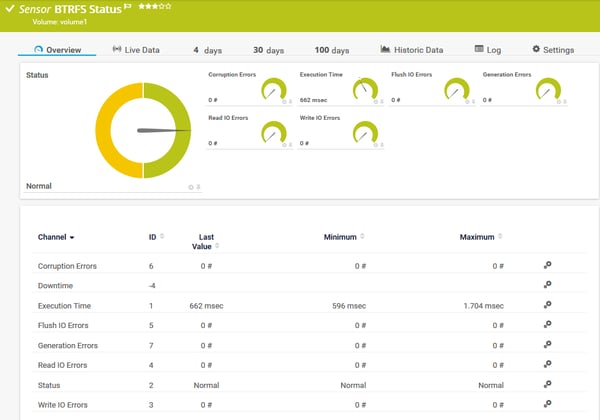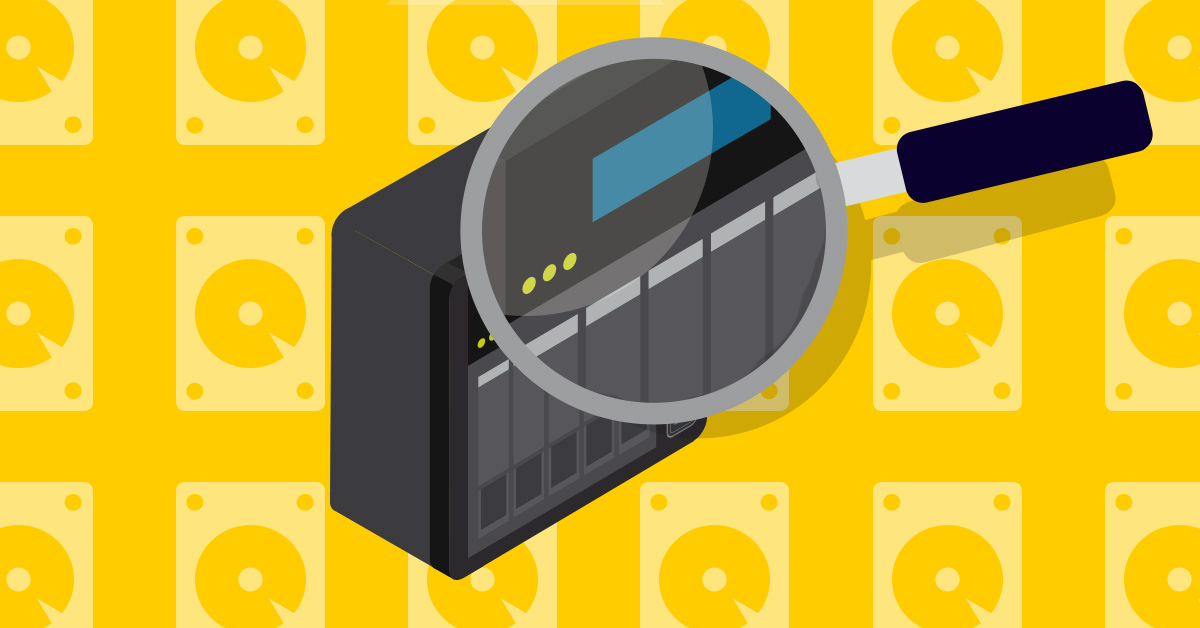More and more data is being created worldwide every year. While 33 zettabytes of data were generated in 2018, forecasts predict that about 163 zettabytes will be generated in 2025. 20 percent of this will be critical for our everyday life and another 10 percent will be hypercritical, meaning necessary for the continuity of daily life. By 2025, every person in the world with Internet access will be interacting with networked devices on average 4,800 times a day - equivalent to one interaction every 18 seconds. This is mainly due to the rapid development of embedded systems and the Internet of Things (IOT).
In view of these figures, the term "Big Data" takes on a whole new meaning, but also illustrates that storage systems and their security will gain enormously in importance because they form the basis for the majority of these future technologies.
Therefore, I would like to show you in this article what you should monitor for your storage infrastructure and how PRTG can support you.
Requirements to storage systems and what should be monitored
A storage infrastructure can have different dimensions and architectures. While smaller companies usually have one or two servers that provide the storage, larger companies use storage systems from leading manufacturers such as Dell, NetApp, EMC or HP. Especially with larger systems there are more possibilities to store data redundantly and to store large amounts of data efficiently. Deduplication is a technique that manufacturers of such systems consider very important.
Also, a Hyper Converged Infrastructure (HCI) must be considered here. For more and more companies, these systems are an alternative to a classic server landscape, as they include all necessary components.
Independent of type and technology, the following "components/parameters" should be monitored:
- Availability
This does not only mean that the system as a whole is accessible, but also that individual components are accessible. An example is an HBA (Host Bus Adapter), which can lead to reduced access in a multi-path environment or even to a complete loss of data access in a single-path environment. - Capacity
Capacity refers to the amount of available storage infrastructure resources. By monitoring the capacity, failures can be prevented before they occur. This can prevent reduced performance or even the failure of applications or services. - Performance
Monitoring performance evaluates how efficiently the various components are working. To ensure optimal access to a storage system, it is not enough to just monitor it alone. All other components of a data center must work efficiently. Other aspects are, for example, the CPU utilization of servers and switches, the response times of applications or the workload of the network. - Security
Monitoring security not only involves tracking and preventing unauthorized access, but also ensuring that sensitive information can only be viewed by authorized persons. Similarly, data must not be manipulated or altered during transmission. In addition, physical security must always be guaranteed. Monitoring of badge readers or cameras contributes to this.
Monitoring a storage system
For all these parameters, Paessler PRTG provides sensors to help you monitor your storage stack. In addition to sensors for individual disks or volumes, there are also numerous sensors available for monitoring storage systems of leading manufacturers. This allows you to see not only the available storage capacity but also the health status of the system at a glance.
As already mentioned, it is not enough to monitor the storage system alone, since many other hardware components can influence it.
Since the performance of a storage system is strongly influenced by the network load, and bandwidth plays an important role here, communication with the individual network components takes place on different kind of hardware.
However, we should not forget that the file system can also affect the performance of a storage system. Besides well-known file systems like NTFS or REFS for Windows systems, the file system (Win)Btrfs is gaining more and more attention. Originally developed for Linux systems and traded as the successor of ext4, it can also be used for Windows systems since 2017. Even this can be monitored. In the PRTG Sensor Hub there are a number of scripts, plugins or templates available that can be used to extend PRTG according to your needs!

A storage system is an essential part of the IT infrastructure for many companies and varies in technology, design and the storage media used. Storing and accessing data is fundamental to daily business. This is why the market for storage systems is very large and complex, making it difficult to choose the right system. No matter how you store or archive your data - you should monitor your storage system. Paessler PRTG allows you to monitor your system with a large number of predefined sensors for different manufacturers and helps you to detect problems in time to prevent data loss.
Which solution do you prefer for storing data? Locally or in a cloud storage infrastructure? Let me know in the comments below!
 Published by
Published by 












